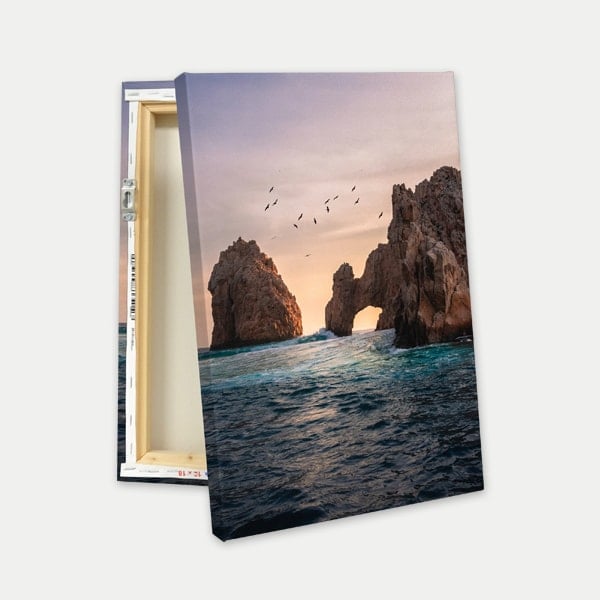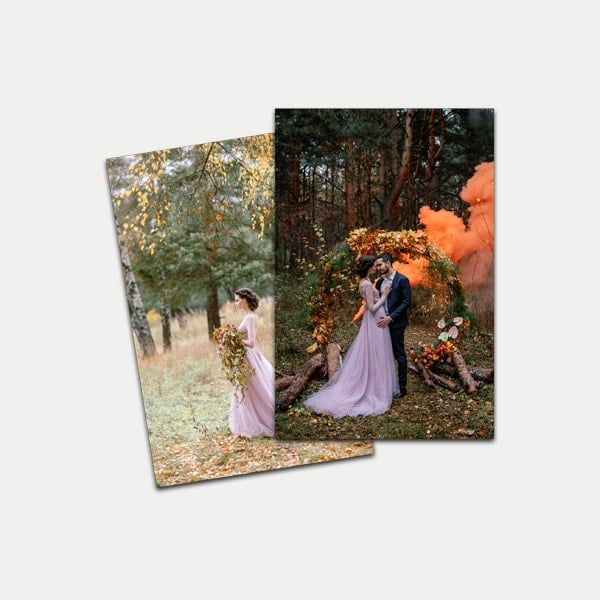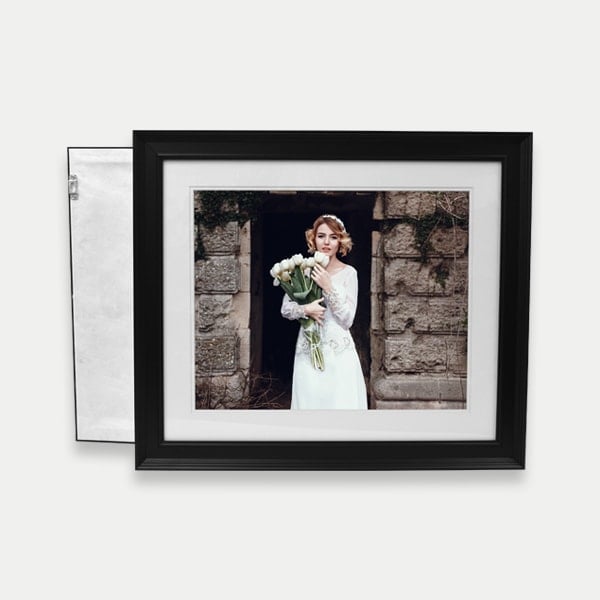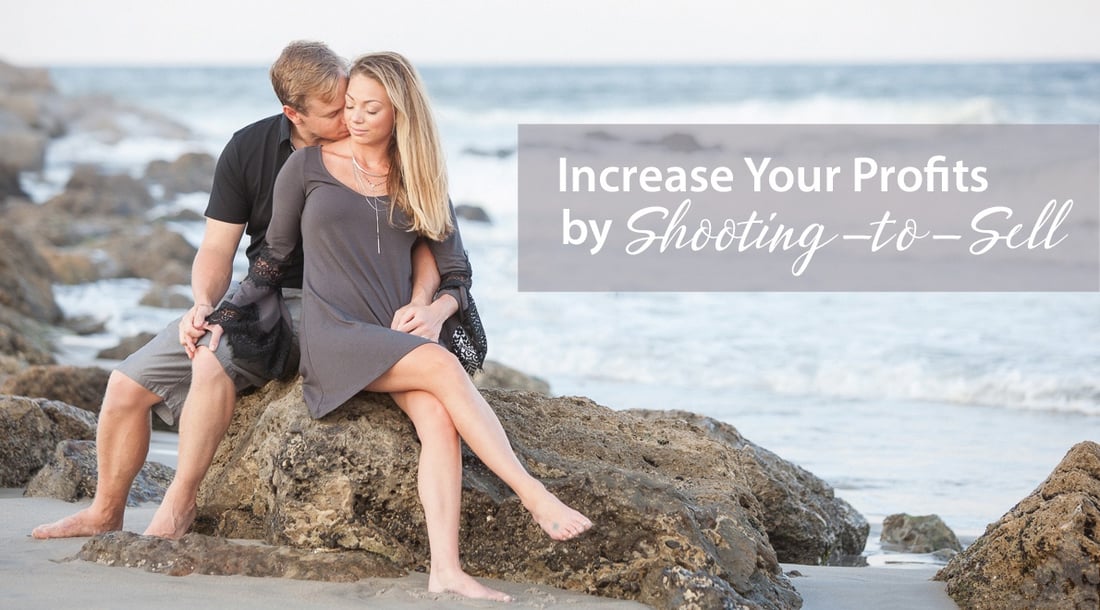
A Guest Blog Post by Lori Unruh
In our recent webinar with Fundy Software, we featured wedding and portrait photographers Lori Unruh and Jeff Poole, of The Shoot Space, who provided some valuable insight into shooting for the sale. This included tips for pre-session consultations, educating your clients on print options, and an in-depth look at growing your business with design tools like Fundy Software. The webinar was jammed-packed with information, and attendees! With so much information and so little space, we knew not everyone got the chance to attend. Luckily, Lori offered to share her in-person sales tips outside of the webinar and offer her valuable advice on the CG Pro Prints blog. Continue reading to learn more about succeeding at IPS by Lori Unruh.
As a small business owner, earning a profit is top priority to keep your business running. As a photographer, focusing on sales is often at the bottom of the priority list. Luckily, when you shoot-to-sell, you can easily make a profit while keeping photography the main focus.
The Pre-Session Consultation
The key ingredient in shooting-to-sell is knowing what you’re going to sell! The only way you’ll know is by discussing this with your client beforehand. Before any portrait session, we invite our clients to the studio to discuss the location, wardrobe, and “feel” for the shoot. But on a deeper level, we want them to be surrounded by wall portraits, albums, and prints—and to ultimately start thinking about which of those products they want to have in their home.
It’s an important discussion to have. The simple question, “What do you plan to do with your images?” will often reveal that the client simply hasn’t thought about it. When they only know they want pictures, they often default to digital files because they don’t know what else to do. So show them wall portraits, show them albums. Remind them that Facebook isn’t forever. When you shoot for the moon in terms of product suggestions, it opens up possibilities our clients simply haven’t considered yet.
If we can get our clients on board with the right products early in the process, we never have to do a hard sell. The consultation allows them to think bigger, plan their budget accordingly, and be prepared to buy at their sales appointment. And because we are not doing a hard sell, they are excited about their purchases. Win!
The Shoot
So you’ve planned your shoot, including location, wardrobe, the “feel”, and even the products. Now it’s time to shoot with those products in mind. Truth is, different products lend themselves to different imagery.
For example, if a client’s goal is one amazing art piece to hang over their mantel (a common request here on the east coast), then you know you need to take your time to get 'The Shot.' This means careful posing, lighting that is spot on, tack-sharp focus, and amazing composition. You work slowly and deliberately, because perfection is key when you’re printing large. On the other hand, if you are working towards a portrait album, variety and quantity are key, and you may need to work more quickly and loosely in order to deliver.
The Sale
Our sales process follows a very specific flow to help ensure consistent sales. First, we greet the clients, make small talk, offer refreshments, etc. Then we explain the sales process. We tell them that they’ll see a slideshow of all the images, then we’ll revisit which products they’re interested in purchasing, and then we’ll help them choose the images that fit those products. It’s a reminder that the goal of photography is to take home products. There’s no sticker shock, because they’ve already seen our prices at the pre-session consultation, and they’ve prepared themselves to buy.
There are a lot of great sales programs out there, but I like the flexibility Lightroom allows. I can do the slideshow, see all the images in grid mode, compare a few images at a time in Survey mode, zoom in on individual images in Loupe mode, and even change the crop and/or color treatment right on the spot.
To help the client choose their favorites, I typically choose 2-4 images that are similar, and pull them up on the screen in Survey mode. This allows the clients to compare the images and choose without having to look at each image individually. I mark their favorites using the Pick flag, and also mark any images they don’t like using the Reject flag. I mark any images they ultimately order with the color blue (for our studio, indigosilver!) so that they can quickly see which ones they’ve ordered and whether they’ve forgotten a favorite.
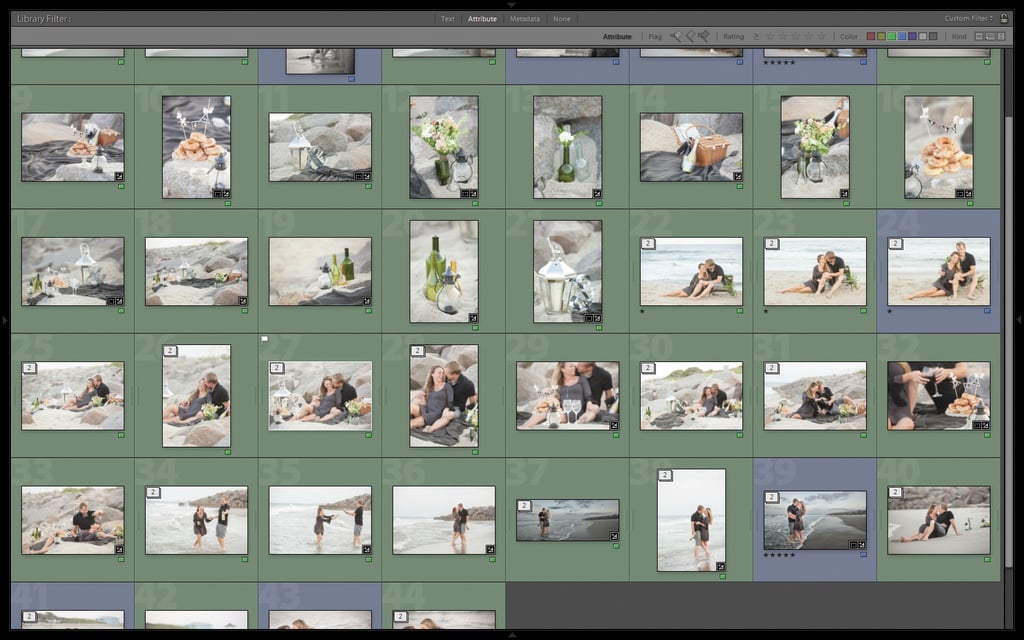
Designing Your Products to Sell
Now that the client has chosen their images, it’s time to start designing their products! This client chose a wall collage and an album. I marked the collage images blue, the album images green to help aid the design process.
The drawback to using Lightroom is that these images would now need to be exported into jpeg format before I can design anything. There are various sales tools that can make this process easier for photographers, like Fundy Designer, but ultimately you need to find a program that works best for your business and one that you’re comfortable using.
There are advantages to keeping your clients around for the design process. Often times, a client might envision a collage with 2 or 3 canvases during the pre-session consultation. However, during the sales appointment, they chose 8 or 9 favorites. With Fundy’s Gallery Designer, I can reconcile those differences by showing the clients how a collage might look on their own wall. I can show them different options right on the spot, from a simple diptych to a complex 8-image grid, and they can decide which they like the best. Hint: it’s usually NOT the basic diptych.
For example, here are some canvas collages Gallery Designer suggested using my clients’ favorite shots:

Personally, my favorite style of collage is the “Main + Supporting” layout featuring one amazing image and then letting the other images add to the story. In trying to use all 8 of my clients’ favorites, the supporting images get lost in the layout.
The configuration we chose used 6 of the 8 images, allowing the supporting images a little more real estate on the wall. I showed the configuration to my clients to scale in their own living room, which helped them realize that a bigger collage has more impact. By having the clients present, they decided on the spot whether or not to upgrade from that initially planned diptych.
In this example, notice how well a pre-session consultation paid off– our gray color scheme with the wardrobe and location worked perfectly with the décor in the clients’ home.
In a single sales meeting, we were able to design the perfect collage that our clients fell in love with, and they upgraded themselves without a big hard sales push. In the end we are left with clients that are happy and excited to have such beautiful artwork in their home. By actually showing them the possibilities, we exceeded their expectations! This outcome certainly would not have been possible had we simply placed the images in an online gallery for our clients to choose.
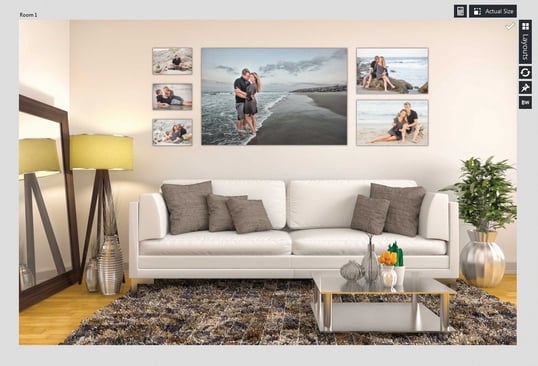 |
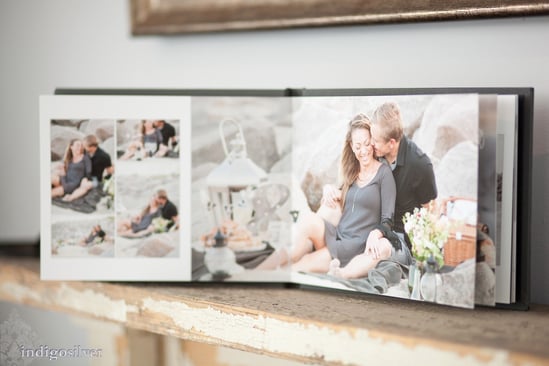 |
After the closing of our canvas sale, the next step is finalizing the album design. With portrait albums, our clients purchase a certain number of images. Once they’ve chosen the album style and images, there is less input needed from them, so we don’t ask them to stay at the studio during album design.
Similar to canvas and wall décor products, albums are a key part of our shoot-to-sell strategy. When you know your clients want an album from the start, you are able to ensure you capture a wide variety of images and have the ability to tell multiple stories throughout their shoot. This will also ensure that the canvas wall collage on its own won’t be enough and they’ll be excited to have more of their images printed.
In conclusion, shooting to sell comes down to vision. Make sure that you and your client have the same vision prior to the shoot, and then deliver on that vision with the images you create and the products your clients take home.
Keeping this vision in mind, it’s virtually impossible for your clients not to buy or for them to have buyers’ remorse about their purchase. As an added bonus, when you exceed their expectations, they come back… and bring their friends!
We invite you to leave your in-person sales questions in the comments for Lori and Jeff!


%20(1).jpg?g?fit=crop&fm=webp&ixlib=python-1.1.2&q=50&w=275&s=10eb574c77d4a90032ddda139482314e)
.jpg?fit=crop&fm=webp&ixlib=python-1.1.2&q=50&w=275&s=10eb574c77d4a90032ddda139482314e)
.jpg?fit=crop&fm=webp&ixlib=python-1.1.2&q=50&w=275&s=10eb574c77d4a90032ddda139482314e)
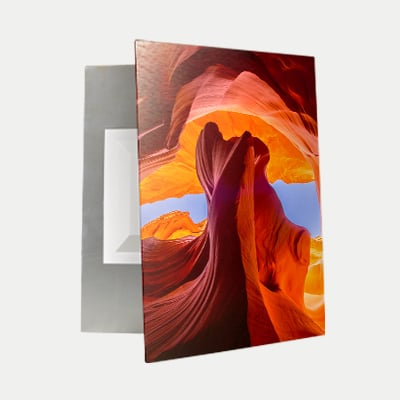
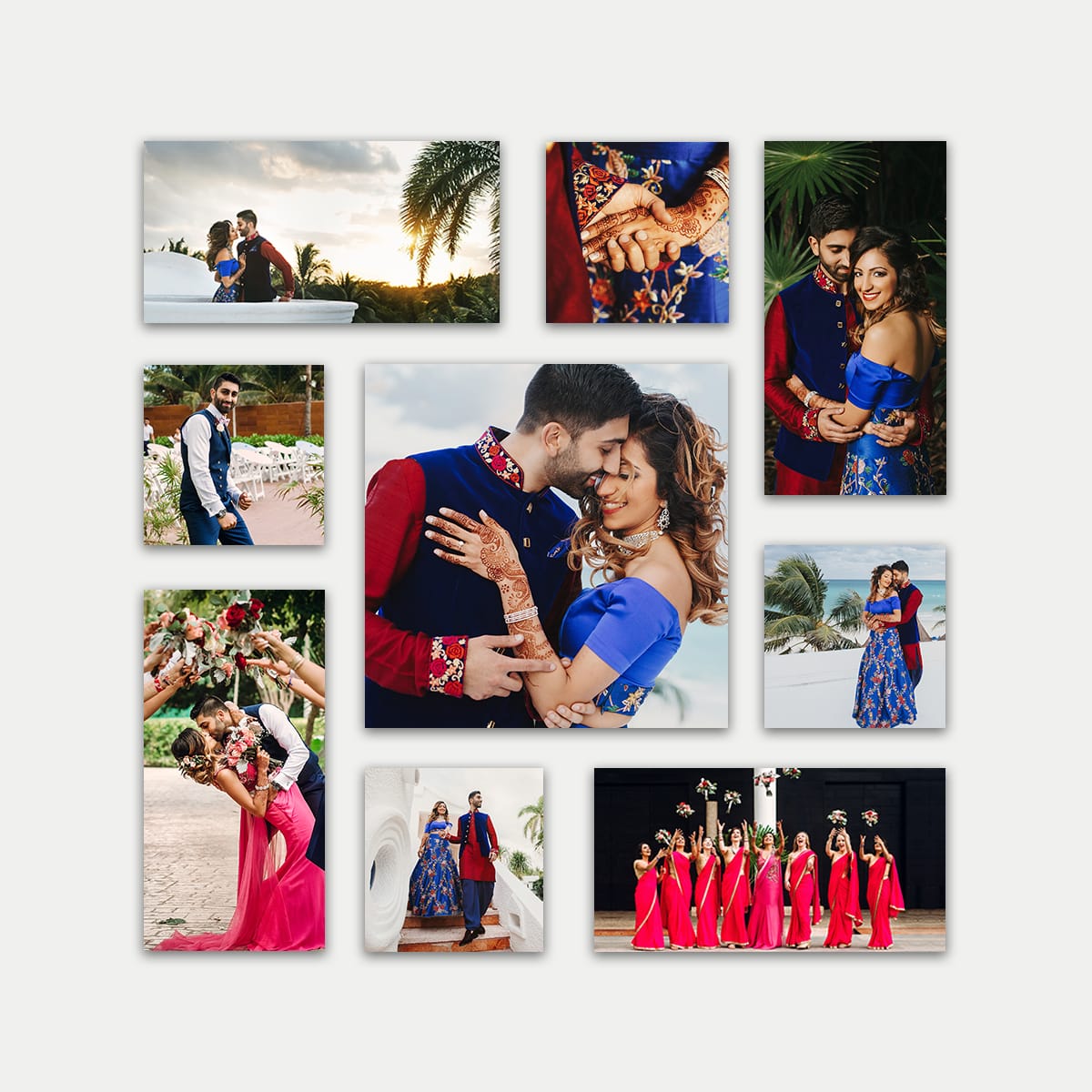
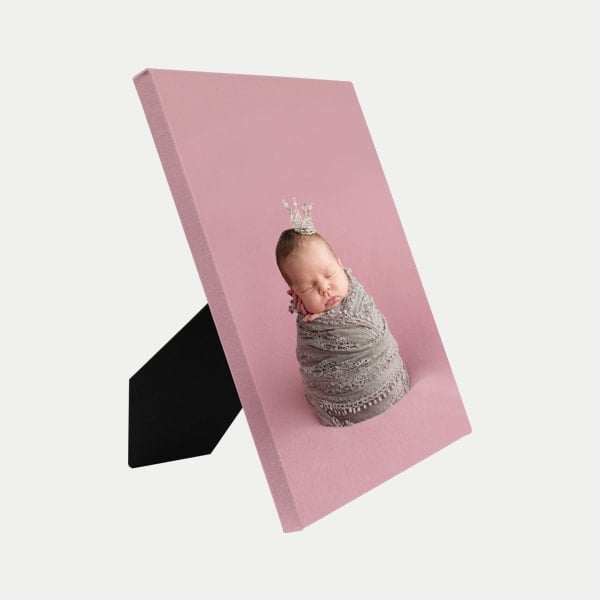
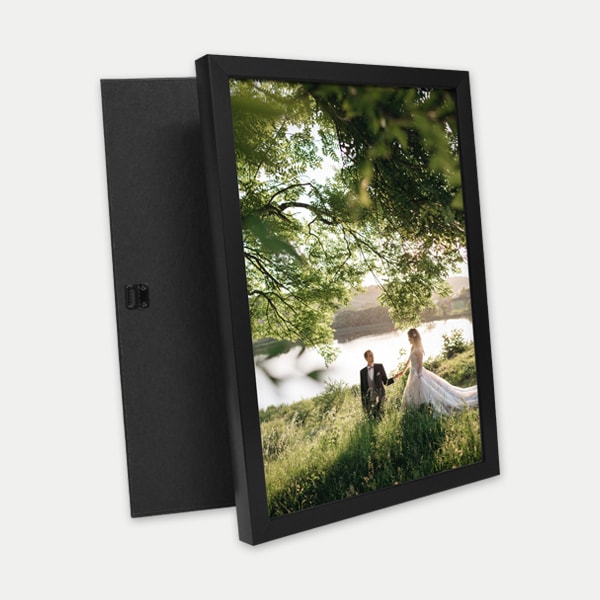

.jpg?fit=crop&fm=webp&ixlib=python-1.1.2&q=50&w=275&s=b9aae1c5c0970235dbe50085d8beac35)
.jpg?fit=crop&fm=webp&ixlib=python-1.1.2&q=50&w=275&s=9a935dfc972e9b1dea5da9bed416389a)

